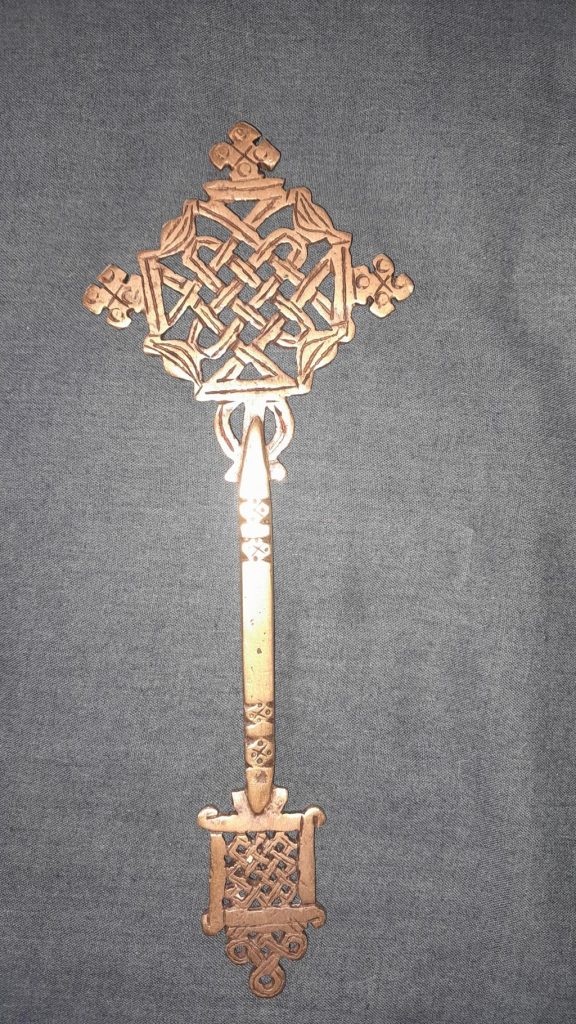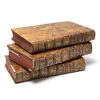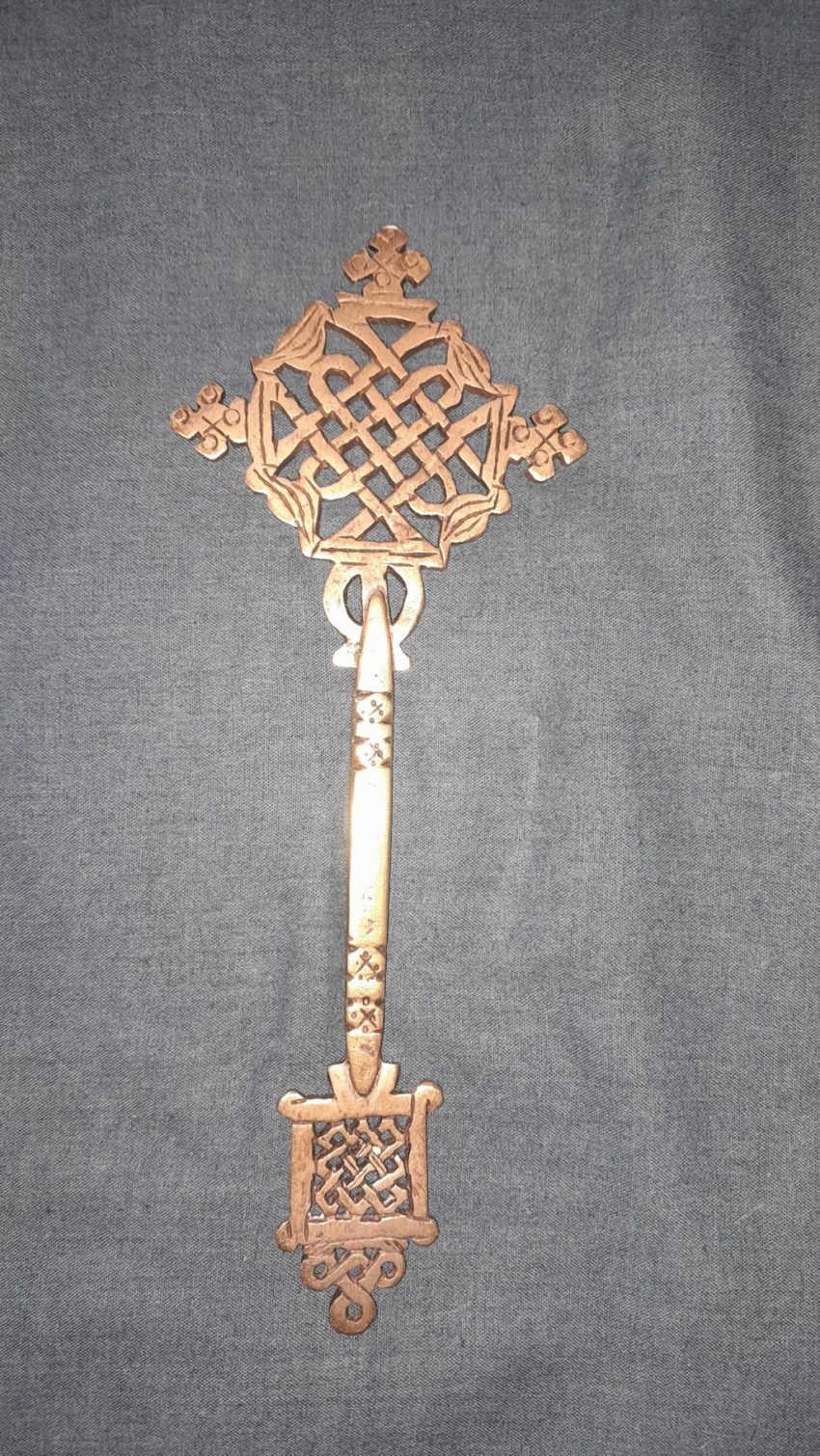The Ethiopian Orthodox Cross (Amharic: የኢትዮጵያ መስቀል, Ye-Ityoppya Mesqel), also called the Abyssinian Cross or Lalibela Cross,
is one of the most distinctive and ancient Christian symbols in the world. It belongs to the Ethiopian Orthodox Tewahedo Church, one of the oldest Christian denominations (officially dating back to 328 CE when King Ezana of Aksum converted).
Key Features
- Intricate lattice design: Unlike the simple Latin cross, Ethiopian crosses are highly elaborate, made of repeating geometric patterns (often squares within squares) that symbolize eternity and the interconnectedness of all creation.
- No corpus (body of Jesus): Like most Eastern Orthodox crosses, it never depicts the crucified Christ, emphasizing resurrection over suffering.
- Three distinct styles based on region and craftsmanship:
- Lalibela crosses (named after the rock-hewn churches) – the most ornate, often made of silver or gold, used by high priests.
- Aksum crosses – simpler, sturdier, with wider arms, reflecting the ancient Kingdom of Aksum.
- Gondar crosses – lighter, more decorative, from the 17th–18th century Gondarine period.
Types of Ethiopian Crosses
| Type | Description | Usage |
|---|---|---|
| Hand crosses (ማንቆርቆር) | Small, held in the right hand by priests during blessings | Most common, highly personal |
| Processional crosses (መስቀል) | Large, mounted on long staffs, carried in ceremonies | Used in Timkat (Epiphany) parades |
| Neck crosses (መስቀል አንገት) | Worn by laypeople, usually simpler brass/silver | Daily wear, baptism gifts |
Symbolism
- The open latticework represents the Tree of Life and never-ending faith.
- The four corners often symbolize the Four Evangelists or the four corners of the world where the Gospel spreads.
- Many have 12 smaller squares inside, representing the 12 Apostles.
Cultural Significance in Ethiopia
- Every church has its own unique cross design; copying another church’s cross is taboo.
- During Meskel (Finding of the True Cross, Sept 27), massive bonfires are lit and processional crosses paraded.
- In rural areas, priests still bless people by touching the forehead with their hand cross while chanting in Ge’ez.
Famous Examples
The Aksum Tsion Maryam cross – ancient, linked to the Ark of the Covenant traditions.
The Cross of Lalibela (13th century) – housed in Bet Medhane Alem, world’s largest rock-hewn church.


